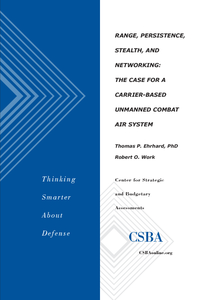
Ever since Thucydides recorded the dramatic fall of Athens’ vaunted navy at Syracuse in 413 BC, naval warfare has been marked by abrupt competitive shifts. Intense geopolitical and maritime rivalries between well-financed seafaring nations, the emergence of new operational challenges for established naval powers, and the novel incorporation of advanced technologies in naval weapons and ship designs have all repeatedly spurred transformations that have redefined naval warfare.
These transformations have inevitably caused sharp changes to the ships and weapons thought to be most decisive in naval combat. In the process, established hierarchies of naval powers have been re-ordered, with clear winners and losers. The most successful naval competitors have generally been those best able to recognize, anticipate, or hedge against impending changes in naval warfare, or those that actively seek change to better their competitive position.
One need look no further than the US Navy to understand how abrupt these competitive transitions can be. In the relatively short period between the Japanese attack on “battleship row” at Pearl Harbor in December 1941 and the decisive American naval victory at the Battle of Midway six months later, the aircraft carrier and its air wing quickly replaced the battleship as the capital ship of the US battle fleet. During the subsequent advance across the Pacific toward Japan, and informed by nearly two decades of intense experimentation and development, aircraft carriers sparked changes to both the organization of the Navy and the way it fought. Indeed, the Navy’s enthusiastic wartime embrace of carrier-based airpower and its rapid rise to the top of the global naval competitive hierarchy were inextricably linked, assuring that carriers would stay atop the US naval pecking order after the war.
Today, nearly seven decades later, US aircraft carriers with their large, multi-mission air wings remain the most powerful surface combatants afloat, and are among the United States’ premier power-projection systems. As the nucleus of powerful Carrier Strike Groups (CSGs)— which also include several missile-armed surface escorts and logistics ships, as well as nuclear-powered attack and cruise missile submarines, land-based maritime patrol aircraft, and additional surface combatants and logistic ships operating in direct support—aircraft carriers epitomize America’s global reach and raw military power. It is therefore in the Navy’s best interest to maintain and enhance the combat capabilities of these important fleet assets.
Achieving this objective may be quite difficult. The premise of this paper is that the US Navy is faced with an impending competitive shift that will demand that it rethink and reconsider some of the lessons learned during the past six-and-a-half decades when “carrier warfare” so defined US naval operations and thinking. Failing to do so, and failing to adapt the carrier and its air wing to cope with the emerging strategic environment and its associated operational challenges, will likely put the Navy, its carrier force, and the nation at a competitive disadvantage in the coming decades.



























